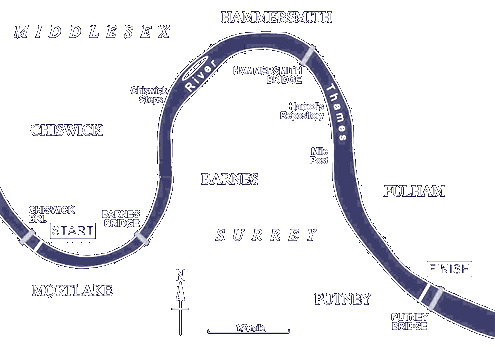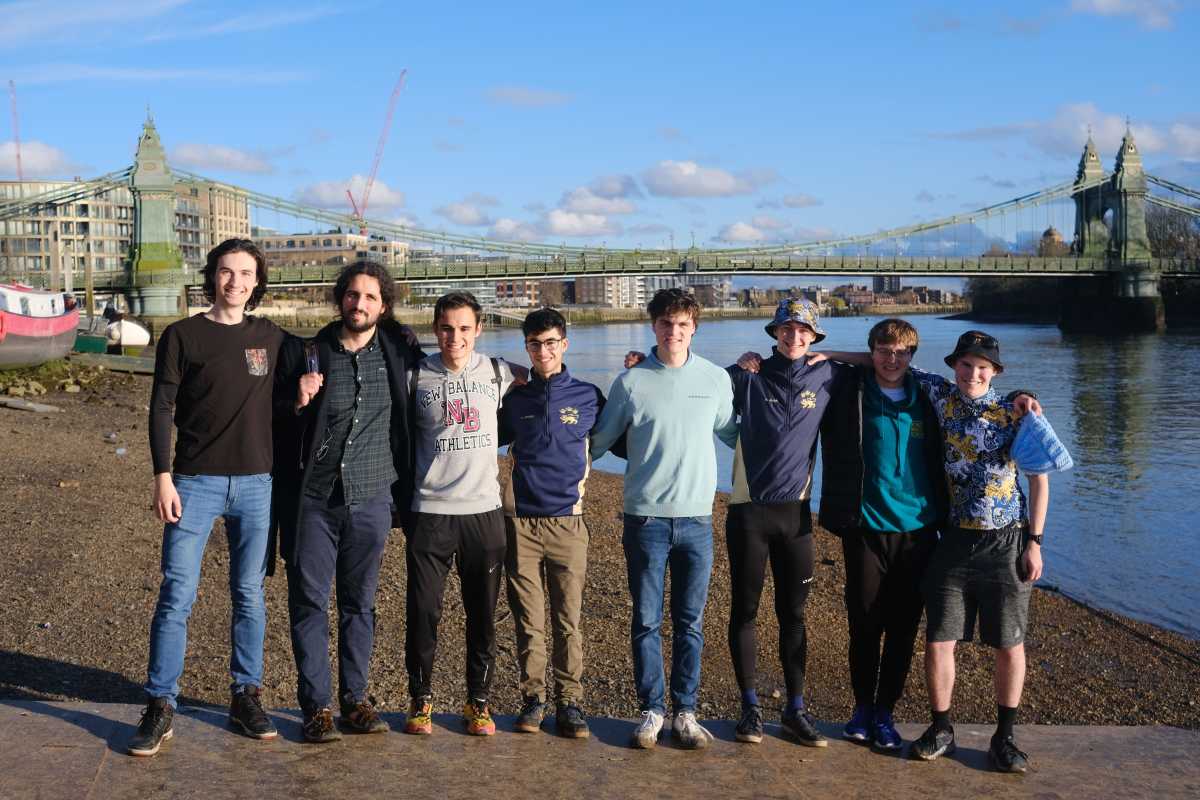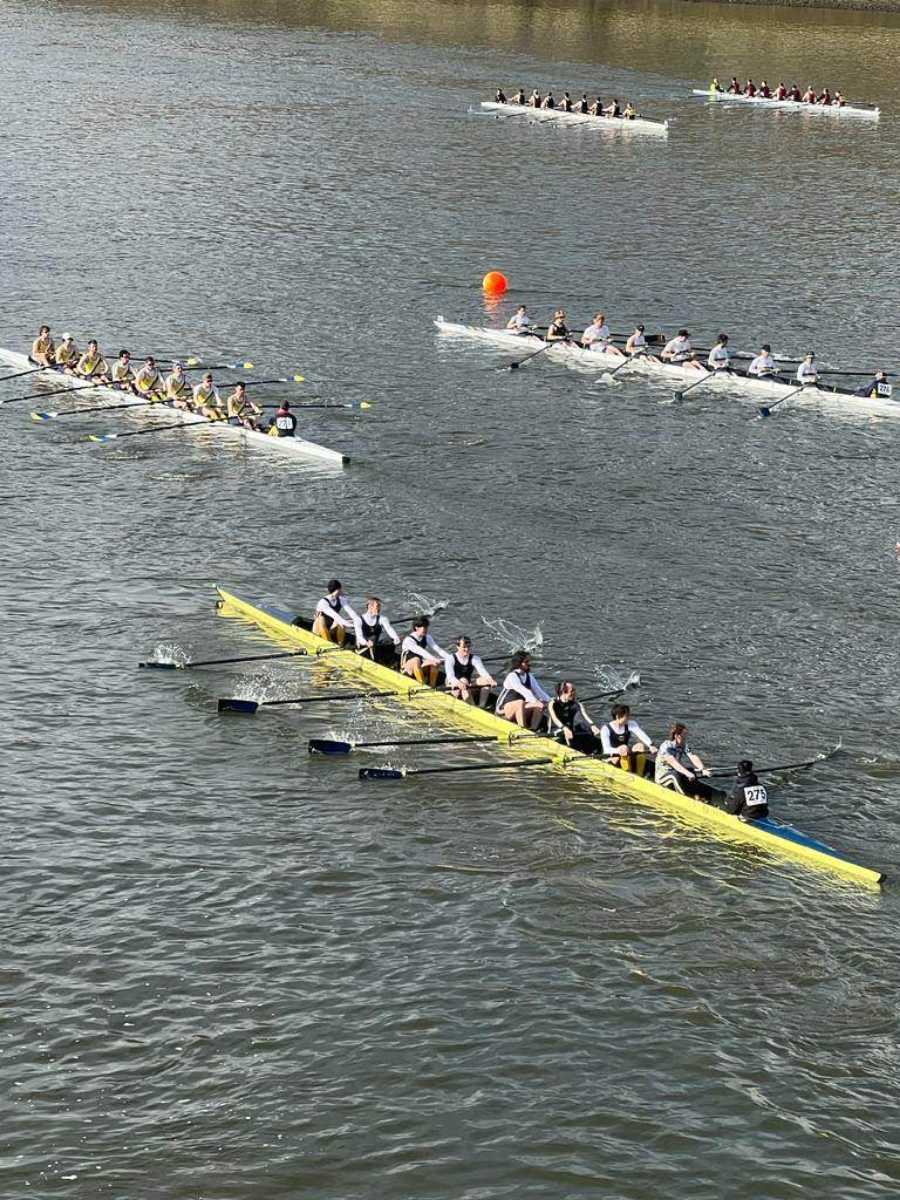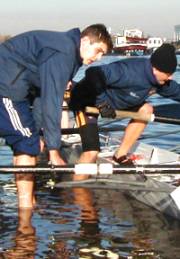Rowing
The Head of the River Races
Introduction
The two largest single rowing events in the UK are the "Head of the River Fours", held in November, and the "Eights Head" in March, on a stretch of the tidal River Thames (known as the "Tideway").
|
Both these races are run over the Championship course (the Oxford vs. Cambridge University Boat Race course), but in the opposite direction from Mortlake to Putney - a distance of 4 1/4 miles. Open to anyone, they attract crews from the majority of rowing clubs across the UK - including the top boats from Leander and Queens Tower containing our international level rowing talent, as well as many crews from abroad. The events are always oversubscribed and involve a staggering 550 IVs in November and 420 VIIIs (inluding around 65 foreign crews) in March.
The races are what are known as "processional" head races. Each crew is timed over the course, and boats are started closely one behind the other. Fortunateley, unlike the Cam the Thames is comfortably wide enough for overtaking! The whole thing takes about 1 1/2 hours from the first crew starting to the last crew finishing - with the race itself lasting between 16 1/2 minutes for the fastest VIII to 26 minutes for the slowest IV.
The Course
 |
| The Head of the River Race Course from Mortlake to Putney |
The map above shows the course, starting just after Chiswick Bridge and finishing just short of Putney Bridge.
The Stream
The race is run with the current. Since this section of the river as far as Teddington Lock is tidal, the date of the race and the starting time must be set carefully so that it coincides with the water flowing out to sea. (The University Boat Race is run when the tide is rising and water is flowing "upstream".) The speed of the current increases to a maximum an hour or two after the tide turns, and the start of the race is set to coincide with the fastest current. Thereafter, the current gradually diminishes as the water level falls, so subsequent crews gain less and less assistance from it.
 |
| This procession of top crews is seen to be following carefully similar courses around the Hammersmith Bend - aiming for the narrow fast flowing stream. |
The current is strong on the Thames - making it a significant factor in the race. Furthermore, as with all rivers, the water flows only slowly near the banks and most quickly over the deepest parts of the river. On the river Thames the dredged deep channel for large boats is relatively narrow so there is a great deal to be gained by steering carefully to remain on this, the fastest flowing water - referred to as "the stream". Crews erring from the stream can cost themselves a great deal of time compared with the surrounding crews.
The Results and Starting Orders
|
Since crews starting first gain more advantage from the stream, the finishing results are used as the starting orders for the following year's races, with new entrants starting at the back. In a manner not all that dissimilar to the bumps, crews therefore win themselves a good starting position for the following year if they perform well.
|
For such a prominent event it is strange that the ebbing stream means, of course, that it is difficult to compare the results of crews starting with wildly different starting numbers. A crew starting 450th will clock a significantly slower time than they would were they to start 150th. In 1998, for example, in Matt's report it was thought that starting at the back with the new entries cost our Men's VIII 30 or 40 places - their overall position of 89th quoted as being worthy of perhaps 54th if 'stream adjusted'.
The results are further confused in the Head of the River Fours by the three types of boat able to enter. Technique and fitness being equal, a quad (abbreviated as "4x" - in which, as in single sculling boats, each oarsman has two oars, one to either side of the boat) will move faster than a coxless IV ("4-") which will move faster than a coxed IV ("4+"). These differences explain why quads are always the fastest boats and why Matt Pinsent and James Cracknell finishing in a coxed IV at 12th in 2001 is more impressive than it would seem at first.








